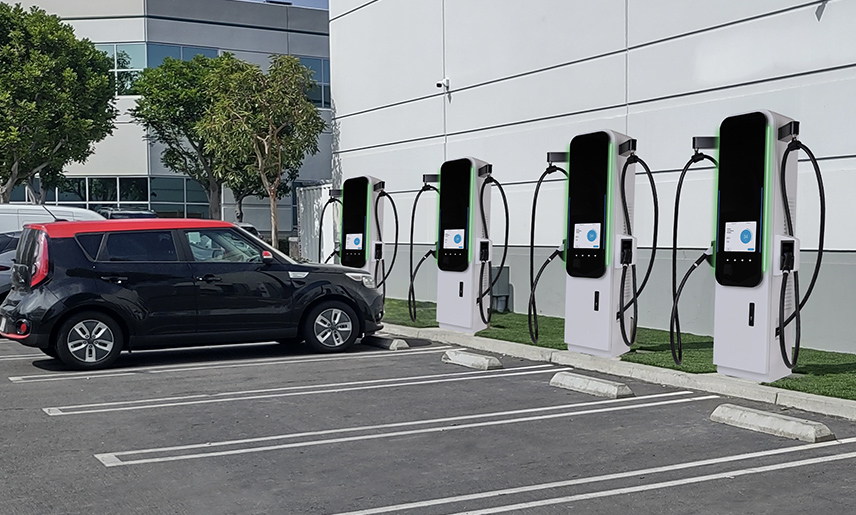In a world increasingly driven by sustainability, electric vehicles (EVs) are no longer just a vision of the future; they are the present. By the end of 2023, the number of EVs on the roads is expected to surpass 20 million globally, according to Bloomberg Green. As these numbers soar, fast EV charging stations are emerging as a critical component in transforming urban mobility. In this article, we’ll explore how these rapid chargers are reshaping city landscapes, making EVs more accessible, and revolutionizing our approach to transportation.
The Rise of Fast Charging: A Game Changer for Urban Mobility
Understanding Fast Charging Technology
Fast charging technology is the cornerstone of the EV revolution. Unlike traditional Level 1 and Level 2 chargers, which can take several hours to fully charge a vehicle, fast chargers—often referred to as DC Fast Chargers—can power up an EV in as little as 30 minutes. This rapid advancement is made possible by high-power charging equipment that can deliver up to 350 kW of power, according to TechCrunch.
- Types of Fast Chargers:
- DC Fast Chargers: Ideal for quick top-ups, found in urban areas and highways.
- Ultra-Fast Chargers: Deliver power exceeding 150 kW, making long-distance travel feasible.
Urban Integration and Infrastructure Expansion
The proliferation of fast charging stations across urban landscapes is nothing short of transformative. Cities like Oslo, Amsterdam, and San Francisco are leading the charge, integrating these stations into existing infrastructure to encourage EV adoption.
- Key Developments:
- Public-Private Partnerships: Cities are collaborating with companies like Tesla and Volkswagen to expand networks, as reported by Reuters Mobility.
- Strategic Placement: Stations are being installed in high-traffic areas such as shopping centers and office complexes for maximum accessibility.
Reducing Range Anxiety
One of the main barriers to widespread EV adoption has been “range anxiety”—the fear that a vehicle will run out of power before reaching a charging station. Fast charging stations are alleviating these concerns by providing a reliable and quick solution.
- Statistics to Note:
- According to InsideEVs, the average distance between fast charging stations in urban areas has decreased by 40% since 2020.
- A 2023 report from IEA highlights that 70% of new EV owners cite improved charging infrastructure as a primary reason for their purchase.
Practical Guides: Maximizing Fast Charging Benefits
How to Efficiently Use Fast Charging Stations
To get the most out of fast charging stations, consider the following tips:
- Plan Your Route: Use apps like PlugShare or ChargePoint to locate available stations along your journey.
- Optimize Charging Times: Charge during off-peak hours to reduce wait times and costs.
- Maintain Battery Health: Avoid frequent fast charging to prolong battery lifespan, as advised by Battery University.
Where to Find and Compare Charging Options
Finding the right charging station is crucial for convenience and cost-effectiveness:
- Platforms to Explore:
- Electrek and CleanTechnica: Provide comprehensive reviews and comparisons of charging networks.
- Tesla Supercharger Network: Known for its speed and reliability, ideal for Tesla owners.
What to Compare When Choosing a Charging Station
When selecting a charging station, consider:
- Charging Speed: Match the station’s power output with your EV’s capabilities.
- Cost: Compare pricing models—per kWh, per minute, or flat rates.
- Accessibility: Evaluate location convenience and availability of amenities.
The Future of Urban Mobility: A Fast-Charging Perspective
Fast EV charging stations are more than just infrastructure; they are catalysts for change. As we look towards the future, several trends are poised to further revolutionize urban mobility:
- Wireless Charging: Emerging technology that could eliminate cables and make charging even more seamless, as highlighted by MIT Technology Review.
- Energy Storage Solutions: Integration with renewable energy sources to create sustainable charging networks, as discussed in PV Magazine.
- Autonomous Charging Fleets: Envision a future where autonomous vehicles charge themselves—a concept being explored by brands like Rivian and Hyundai.
Conclusion: Fast Charging as a Pillar of Sustainable Urban Mobility
In conclusion, fast EV charging stations are not only accelerating the adoption of electric vehicles but are also integral to the transformation of urban mobility. By reducing range anxiety, integrating seamlessly into city infrastructures, and offering practical charging solutions, these stations are paving the way for a cleaner, more efficient future. As technology continues to advance, the potential for even greater innovations in this space is limitless.
So, are you ready to embrace the electric revolution? Share your thoughts and experiences in the comments below, and let’s drive the conversation forward!
With fast charging stations at the heart of urban transformation, the future of mobility is not just on the horizon—it’s here. Let’s plug in and move forward together.

